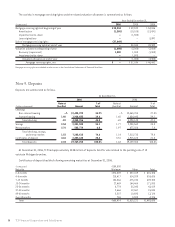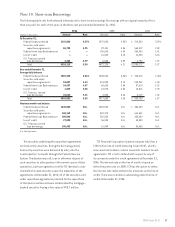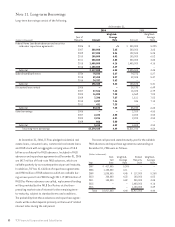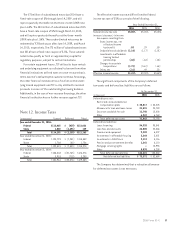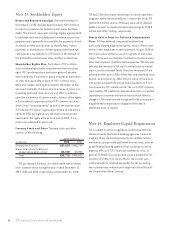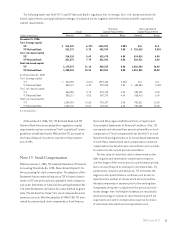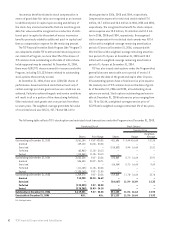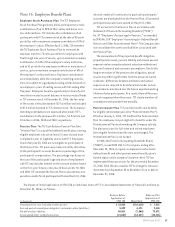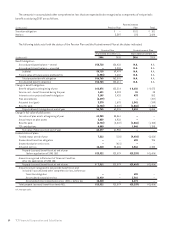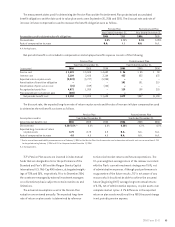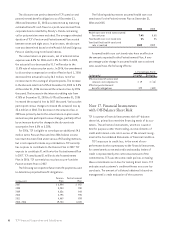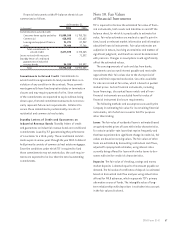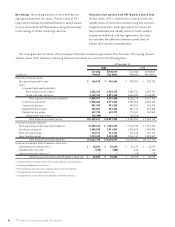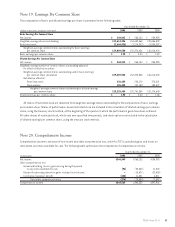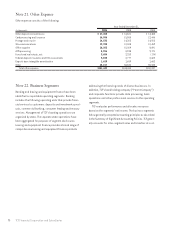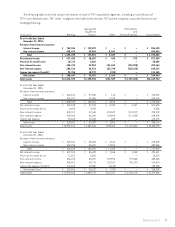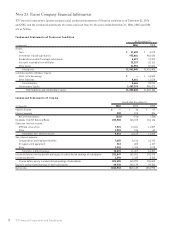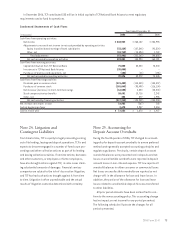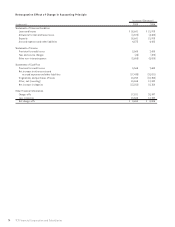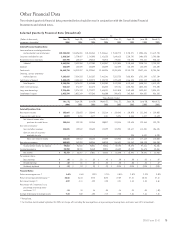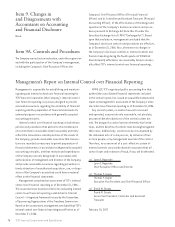TCF Bank 2006 Annual Report Download - page 86
Download and view the complete annual report
Please find page 86 of the 2006 TCF Bank annual report below. You can navigate through the pages in the report by either clicking on the pages listed below, or by using the keyword search tool below to find specific information within the annual report.
The discount rate used to determine TCF’s pension and
postretirement benefit obligations as of December 31,
2006 and December 31, 2005 was determined by matching
estimated benefit cash flows to a yield curve derived from
corporate bonds rated AA by Moody’s. Bonds containing
call or put provisions were excluded. The average estimated
duration of TCF’s Pension and Postretirement Plans varied
between seven and eight years. In prior years, the discount
rate was determined based on the Moody’s AA and Citigroup
Pension Liability long-term bond indexes.
The actual return on plan assets, net of administrative
expenses was 8.5% for 2006 and 11.5% for 2005. In 2005,
the actuarial loss decreased by $1.7 million due to the
11.5% rate of return on plan assets. In 2006, the amendment
to discontinue compensation credits effective April 1, 2006
decreased the actuarial loss by $6.5 million, net of an
increase due to the vesting of all participants. The increase
in the discount rate from 5.25% at December 31, 2005 to 5.5%
at December 31, 2006 decreased the actuarial loss by $926
thousand. The increase in the interest crediting rate from
4.75% at December 31, 2005 to 5.0% at December 31, 2006
increased the actuarial loss by $657 thousand. Various plan
participant census changes increased the actuarial loss by
$3.6 million in 2006. The decrease in the actuarial loss in
2005 was primarily due to the actual return on plan assets
and various plan participant census changes, partially offset
by an increase due to the change in the discount rate
assumption from 6.0% to 5.25%.
For 2006, TCF is eligible to contribute an additional $4.5
million to the Pension Plan until the 2006 federal income
tax return has been filed under various IRS funding methods,
but is not required to make any contributions. TCF currently
has no plans to contribute to the Pension Plan in 2007. TCF
expects to contribute $1 million to the Postretirement Plan
in 2007. TCF contributed $1 million to the Postretirement
Plan in 2006. TCF currently has no plans to pre-fund the
Postretirement Plan in 2007.
The following are expected future benefit payments used
to determine projected benefit obligations.
Pension Postretirement
(In thousands) Plan Plan
2007 $ 6,994 $ 987
2008 5,234 980
2009 4,836 964
2010 4,795 925
2011 4,463 893
2012-2016 19,724 4,020
The following table presents assumed health care cost
trend rates for the Postretirement Plan at December 31,
2006 and 2005.
2006 2005
Health care cost trend rate assumed
for next year 7.4% 8.6%
Final health care cost trend rate 5% 5%
Year that final health care trend
rate is reached 2009 2009
Assumed health care cost trend rates have an effect on
the amounts reported for the Postretirement Plan. A one-
percentage-point change in assumed health care cost trend
rates would have the following effects:
1-Percentage-Point
(In thousands) Increase Decrease
Effect on total of service and
interest cost components $ 19 $ (16)
Effect on postretirement
benefits obligations 379 (342)
Note 17. Financial Instruments
with Off-Balance Sheet Risk
TCF is a party to financial instruments with off-balance
sheet risk, primarily to meet the financing needs of its cus-
tomers. These financial instruments, which are issued or
held for purposes other than trading, involve elements of
credit and interest-rate risk in excess of the amount recog-
nized in the Consolidated Statements of Financial Condition.
TCF’s exposure to credit loss, in the event of non-
performance by the counterparty to the financial instrument,
for commitments to extend credit and standby letters of
credit is represented by the contractual amount of the
commitments. TCF uses the same credit policies in making
these commitments as it does for making direct loans. TCF
evaluates each customer’s creditworthiness on a case-by-
case basis. The amount of collateral obtained is based on
management’s credit evaluation of the customer.
66 TCF Financial Corporation and Subsidiaries


